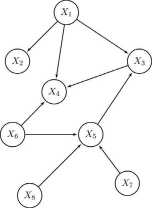7696081872
Diagnostyka - Applied Structural Health, Usage and Condition Monitoring' 3(63)/2012 Cholewa, Amarowicz, Management Of Reąuirements For Developed Diagnostic Systems
etc.) to defined reąuirements. They have filtering as well as search capability. Moreover, they incorporate mechanisms for tracking changes in a reąuirement set and collaborating with extemal applications, e.g. database systems, MS Office documents and the Iike. In addition to that, they allow for team collaboration during the reąuirement development process, establishing various levels of access to tlie reąuirement set, developing mechanisms of automated messaging on any potential modifications in tlie reąuirement set and the like.
Analyzing the description of numerous projects and IT projects in particular iinplies that in many circumstances the reąuirement development process relies on negotiations between a client and a projecfs engineer. One common methodology is the so-called EasyWinWin whose origin can be tracked to the negotiation model Win-Win, in which the prima ry objective is a mutual satisfaction of a client and an engineer of fonnulated reąuirements [1]. Throughout the course of a negotiation participants formulate reąuirements, prioritize and evaluate them in order to extract principal reąuirements describing the designed system.
However, such approach caimot be used directly when designing a diagnostic sy stem. It is indeed rather difficult to define a customer for negotiations in such projects. By a fashion, the so-called customer can be the object end-user. In many scenarios such approach is not optimal - mainly because end-users do not usually have the right domain knowledge and tlie diagnostic knowledge that allows them to defme appropriate reąuirements.
The essence of the proposed approach for reąuirement acąuisition is the hypothesis tliat tliis problem can be solved by assuming that any analyzed technical object is a virtual client in a negotiation process. The object (virtual customer) can be represented by an expert system that is capable of establishing object-oriented reąuirements to be met by a diagnostic system.
4. STATEMENTS, STATEMENT NETWORKS
An expert system for use as a virtual client in a negotiation process should be capable of operating based on tlie knowledge it has access to. A knowledge database of the expert system may occur in tlie form of a inultimodal statement network [2, 3, 4,5].
It is assumed that a statement concems a sentence (or an expression) on an observed fact or an opinion. The expression (statement contents) can be assigned the value v, in order to infonn of its logical value or a belief that the statement is true. In the case of definite statements the value is one element out of the set {yes,no}. The statement s is an ordered pair
3 =< e, v > (2)
where c is a statement contents, and v refers to the statement value. Relationships occurring among statements can be described by developing a statement network (see Fig. 3) in which statements appear in the fonn of network nodes. The network is a directed graph
G —< N, E ^3)
in which N is a finite and non-empty set of vertices of tliis graph, and £ is a finite and non-empty set of directed edges linking selected vertices.

Fig. 3. Multimodal statement network
Ali statements used for developing such networks should be collected in a set of statements -thesaurus.
Statements that are gathered in a thesaurus include both descriptive statements (on the objecfs stmcture, possible failure modes of objecfs selected components, failure modę probabilities, repair and senicing costs, etc.) and statements (reąuirements) reporting tlie expected or demanded functionality' of a designed diagnostic system. Both knowledge and reąuirements that are represented by statements are developed and collected based on available literaturę incl. objecfs maintenance manuał and docu-mentation, description of similar objects, data from domain experts. designers and end-users, as well as similar existing Solutions.
Statements that are selected out of a thesaurus can appear as nodes in various developed statement networks. Particular statement networks can be fonnulated based on various aspects of an available knowledge on the objecfs stmcture, functionality, object cliaracteristics, etc., thus fonning a set of statement networks over a common set of nodes. Such a set of statement networks is called a multimodal statement netw ork.
Well designed and developed statement networks reflect relationships between the knowledge on
Wyszukiwarka
Podobne podstrony:
Diagnostyka - Applied Structural Health, Usage and Condition Monitoring’ 3(63)/2012 Cholewa, Amarowi
Diagnostyka - Applied Structural Health, Usage and Condition Monitoring 3(63)/2012 Cholewa, Amarowi
Diagnostyka - Applied Structural Health, Usage and Condition Monitoring 3(63)/2012 Cholewa, Amarowi
Diagnostyka - Applied Structural Health, Usage and Condition Monitoring 3(63)/2012 Cholewa, Amarowi
Diagnostyka - Applied Structural Health, Usage and Condition Monitoring’ 3(63)/2012 Cholewa, Amarowi
Diagnostyka - Applied Structural Health, Usage and Condition Monitoring’ 3(63)/2012
10 Diagnostyka - Applied Structural Health, Usage and Condition Monitoring’ 3(63)/2012 CISZEWSKI, BU
Diagnostyka - Applied Structural Health, Usage and Condition Monitoring’ 3(63)/2012
12 Diagnostyka - Applied Structural Health, Usage and Condition Monitoring 3(63)/2012 CISZEWSKI, BU
Diagnostyka - Applied Structural Health, Usage and Condition Monitoring 3(63)/2012
14 Diagnostyka - Applied Structural Health, Usage and Condition Monitoring 3(63)/2012 CISZEWSKI, BU
Diagnostyka - Applied Structural Health, Usage and Condition Monitoring’ 3(63)/2012
Diagnostyka - Applied Structural Health, Usage and Condition Monitoring 3(63)/2012
Diagnostyka - Applied Structural Health, Usage and Condition Monitoring 3(63)/2012 Spis treści /
18 Diagnostyka - Applied Structural Health, Usage and Condition Monitoring 2(62)/2012 Charchalis, D
8 Diagnostyka - Diagnostics and Structural Health Monitoring l(57)/2011 GONTARZ,
Diagnostyka - Diagnostics and Structural Health Monitoring l(57)/2011 9 GONTARZ,
10 Diagnostyka - Diagnostics and Structural Health Monitoring 1(57)/2011 GONTARZ,
Diagnostyka - Diagnostics and Structural Health Monitoring l(57)/2011 11 GONTARZ,
więcej podobnych podstron